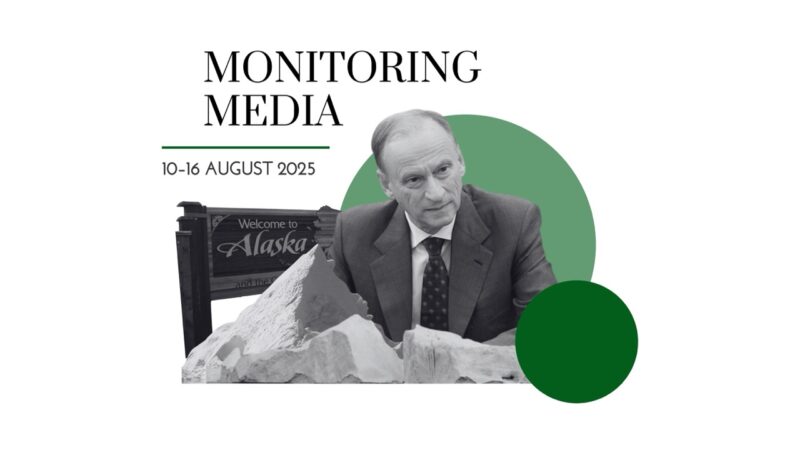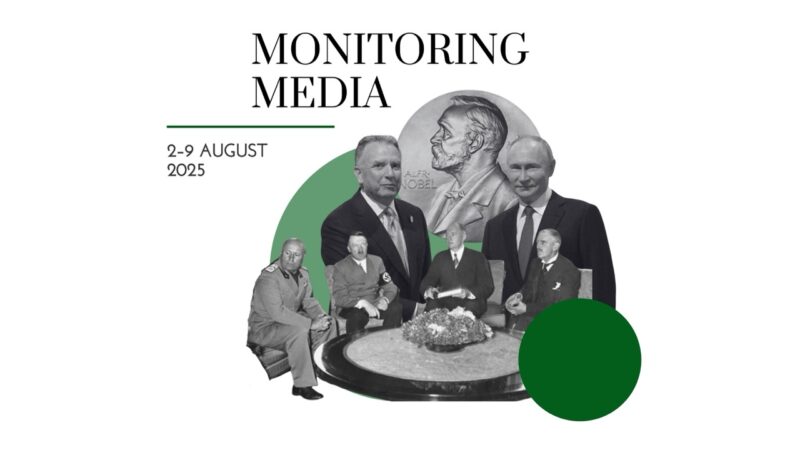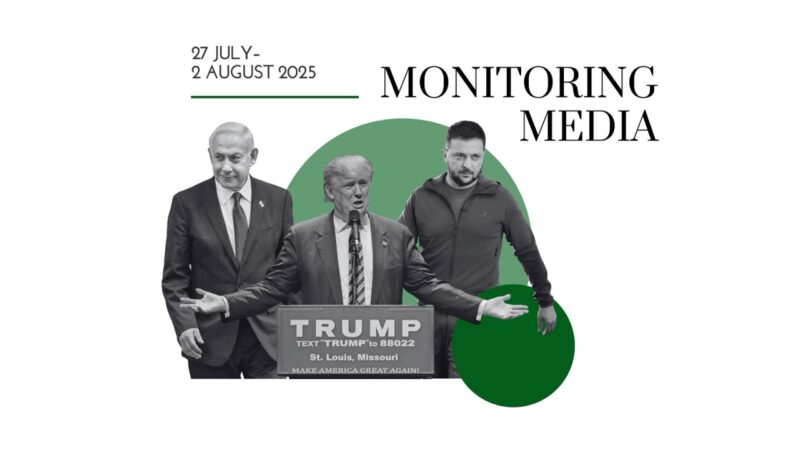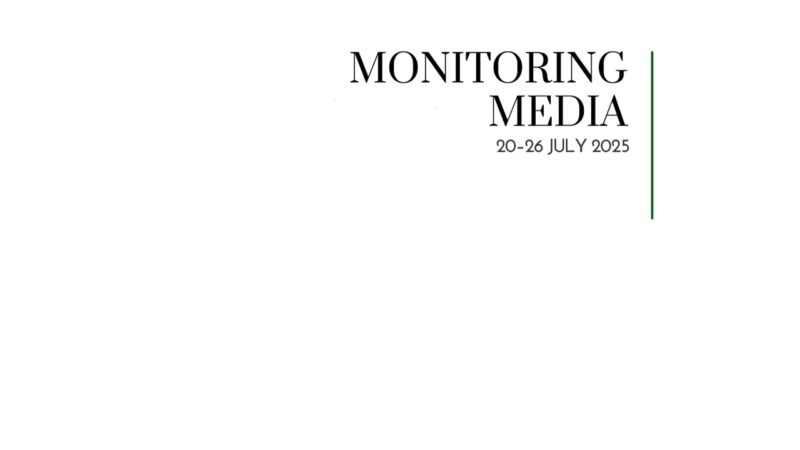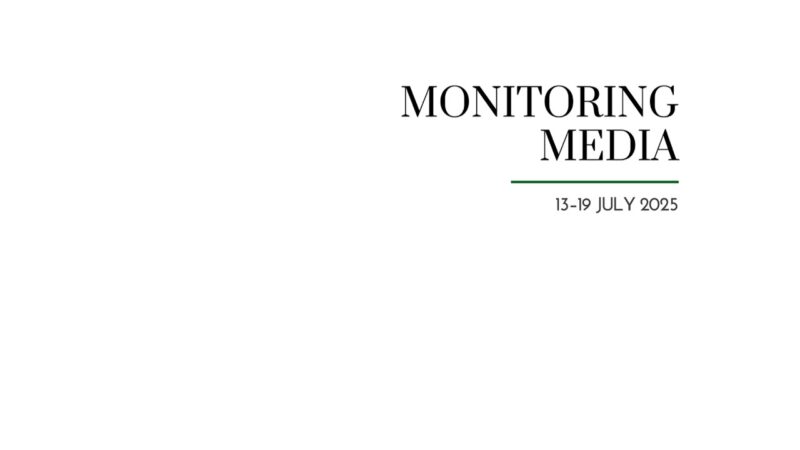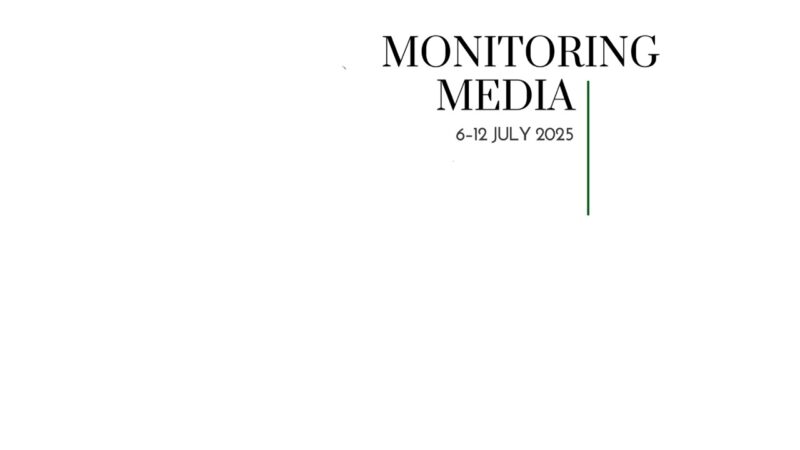Ukraine faces the harshest winter in living memory

CIUS weekly report on media coverage of Ukrainian affairs, 19–25 November 2022
Three publications (Atlantic Council, The Wall Street Journal, and The New York Times) were selected to prepare this report on how the situation in Ukraine has been portrayed in the press during the past week (19–25 November 2022). The sample was compiled based on their impact on public opinion as well as on their professional reputation, popularity among the readership, and topical relevance. These three publications represent centrist and liberal viewpoints on the political spectrum.
This report covers only the most-read and relevant articles about Ukraine, as ranked by the respective publications themselves in the past week. Its scope covers promoted articles on home pages and articles from special sections on Ukraine, with the hashtag #Ukraine, from the paper editions of the publications, and about Ukraine from opinion columns and editorials.
Topics featured in the selected articles:
- Ukraine’s current affairs: Ukraine continues its counterattack in the south; the government in Kyiv urges citizens to leave the cities whose energy infrastructure was severed; Ukraine needs to clear Russia’s mines from 61,000 square miles of its territory; the Ukrainian army should start striking targets inside Russia; Ukraine may become one of NATO’s pillars if accepted to the alliance;
- The world and Ukraine: US legislators want to see Ukraine armed with American high-tech drones; the CIA considers inviting Russian dissidents to cooperate against the Kremlin; the Russian invasion of Ukraine shocked the global economy but also boosted weapons manufacturing; the West should stop being afraid of the Kremlin’s threats if it wants to properly address Russian aggression;
- Russia at war: Russia’s pressure to negotiate peace is a strategy to win time and rebuild the army; Russia kidnapped hundreds of Ukrainian children from occupied territories and does not intend to restore them to their families.
The most common arguments:
Ukraine has not halted its efforts to liberate the southern parts of the country. Jared Malsin and Bojan Pancevski (Wall Street Journal) provide an overview of Ukraine’s series of military advancements in the south following the liberation of Kherson. In particular, they describe Ukraine’s drone attack on the Russian navy base in Sevastopol and attempts to reclaim the Kinburn Spit, which juts into the sea south of Mykolaiv. While the Russian side has declared that it repelled the drone attack and infrastructure was not damaged, maritime traffic was temporarily suspended in the Sevastopol area. As for the Kinburn Spit, Russians exploited its location in order to launch missile, drone, and artillery strikes on Ukraine’s settlements on the right bank of the Dnipro river, particularly Mykolaiv. Malsin and Pancevski cite analysts from the Institute of the Study of War, who claim that “control of the Kinburn Spit would allow Ukrainian forces to relieve Russian strikes on the Ukrainian-controlled Black Sea coast, increase naval activity in the area, and conduct potential operations to cross to the left [east] bank in Kherson Oblast under significantly less Russian artillery fire compared to a crossing of the Dnipro River.” Also, reclaiming the Kinburn Spit could provide Ukraine with an economic boost and possibly lead to the reopening of Mykolaiv port—which processed 35 per cent of the country’s food exports in 2021. Military operations on the spit take place in “silent mode,” and details have yet to be communicated to the public. Finally, considering the dynamic developments on the front and Russia’s continuous missile strikes on infrastructure, Malsin and Pancevski write that “Ukraine’s deputy prime minister urged civilians from Kherson to spend the winter in other parts of Ukraine.”
Ukraine recommends civilians evacuate from the south, as the national electric grid is constantly targeted by Russians. Ian Lovett (Wall Street Journal) states that “over the past six weeks, Moscow has hammered Ukraine’s grid with more than 1,000 missile strikes and drone attacks … Almost half of the country’s power-producing capacity has been disabled.” The situation is very dire in recently liberated Kherson, which remains without electricity or water. To make things worse, the Zaporizhia nuclear power plant (NPP), occupied by Russian forces since March, has also been targeted. The Russian occupiers claim that more than a dozen missiles struck the facility and damaged the power line that feeds the plant. Before the invasion, the Zaporizhia NPP generated 20 per cent of Ukraine’s demand for electricity. In light of the energy shortages, Ukrainian officials have encouraged civilians to evacuate from Kherson and its environs but stress that relocation is voluntary. Lovett concludes that the Russians left Kherson in an organized manner and “are now being redeployed to shore up defenses in the southern Zaporizhia region and to bolster the offensive in the eastern Donetsk region, where Russian forces have been pushing for months to take the city of Bakhmut.”
Thomas Grove (Wall Street Journal) also discusses the destruction of Ukraine’s critical infrastructure and writes that “Russia unleashed one of its biggest barrages of missiles across Ukraine since the start of the war Wednesday [November 23], with strikes on critical infrastructure cutting off power and water supplies in the capital and several other cities.” Grove reports that the strikes killed six people, wounded thirty, and forced the authorities to shut down all three of the nuclear power plants still controlled by the Kyiv government. That being said, Ukraine is believed to have destroy 51 missiles out of the 70 that were launched. Grove writes that “Wednesday’s strikes appear to be part of a Russian strategy of targeting critical infrastructure in Ukraine to knock out power and other supplies as the winter freeze sets in.” The aim of the attack resides in diminishing the resilience of Ukraine’s population, regaining the battle initiative, and putting pressure on the Kyiv government to start peace negotiations. Grove notes that Russia has significantly exhausted its missile stockpiles and is likely to seek international partners who will agree to resupply it. At the same time, in light of the regular missile strikes on civilian infrastructure, the European Parliament passed a resolution that recognizes Russia as a state sponsor of terrorism.
Ukraine needs to clear Russian mines before bringing utilities back to liberated territories. Marc Santora and Brendan Hoffman (New York Times) write that “nearly half of Ukraine’s energy grid has been knocked out by recent Russian missile strikes. Kyiv also estimates that nearly 61,000 square miles of the country could be littered with land mines and other explosives. Some cities and towns lie in ruins.” The de-mining and restoration of electricity supply are interrelated processes, as it is impossible to safely lay cable through liberated territories that remain dangerous to step on. Therefore, utility crews closely follow and cooperate with sappers. But effective electric grid restoration is hampered by constant Russian shelling of recently patched infrastructure. Santora and Hoffman cite Oleksandr Kharchenko, director of the Energy Industry Research Center in Ukraine, who claims that utility crews are carrying out a herculean task: “no one in the world has thrown a system the size of the Ukrainian one into blackout.” Finally, the authors spotlight the case of Kherson, where electricity, heating, and water supply infrastructure was purposely severed by retreating Russians. They also provide details about demining territories northeast of Kyiv, in the village of Myrotske.
The time has come for Ukraine to strike at targets inside Russia, and the West needs to agree. Ira Straus (Atlantic Council) opens her article with a statement that “the United States and Ukraine’s other Western allies have been protecting Russia from Ukrainian counterattack ever since the invasion began on February 24.” To do so, the West has drawn many red lines ahead of Ukraine with respect to Russian military targets which could potentially be attacked. Straus claims that such red lines have “resulted in a surrealistic war where the aggressor benefits from guarantees that any destruction will be limited to the territory of his victim.” To resolve the surreality of the situation, Straus encourages Western governments to provide Ukraine with enough weaponry for sufficient self-defence. Ukrainians have proven that they will not falter as they fight the Russians for their land, though they have more ammunition but very low morale. Moreover, if Ukraine is able to win fast, the war would stop being protracted, which would ease the burden for the US and the EU. Straus goes even further than that and argues that if Ukraine had been provided enough advanced weaponry before 24 February, the escalated invasion would likely not have happened at all. Straus concludes that “in order to defeat Putin and end the war, Ukraine must be allowed to strike back inside Russia.”
Contemporary Ukraine has finally become a promising NATO candidate. Taras Kuzio (Atlantic Council) writes that Ukraine, Georgia, and Moldova strived for decades to approach NATO and the EU, but were not invited. “By signaling to the Kremlin that they were not ready to integrate the countries of the former USSR, Western leaders encouraged Moscow to believe it could reverse the verdict of 1991. This set the stage for a new era of Russian imperial aggression, beginning with the 2008 invasion of Georgia and escalating dramatically since 2014 in Ukraine.” Today, with the Russo-Ukrainian war far from being over, the EU and NATO should still work on a roadmap for Ukraine’s integration into their structures: “The only way to prevent further Russian aggression and safeguard European security is by removing Ukraine from the gray zone it currently inhabits.” Moreover, as Kuzio highlights, the Russian invasion put in place many of the elements that Ukraine was lacking earlier for smooth Euro-Atlantic integration. Firstly, as of October 2022, 83 per cent of Ukrainians support NATO membership of their country. Secondly, Ukraine’s NATO membership will not provoke Russian aggression, as it has already been provoked by different reasons. Thirdly, having the precedent of Western Germany in the 1950s, there exists a path for Ukraine to become a member of NATO even with parts of its territory under occupation. Fourthly, with its free elections and strong civil society, Ukraine has all the democratic credentials required to join the Alliance. Finally, the current competence and performance standards of the Ukrainian army will help it integrate into NATO military structures without much difficulty. Kuzio concludes that “as long as Ukraine remains trapped in a gray zone between Russia and the West, it will serve as a leading source of international instability. NATO membership is currently the only convincing solution to this geopolitical problem.”
US senators lobby the Biden administration to arm Ukraine with advanced drones. Nancy A. Youssef and Gordon Lubold (Wall Street Journal) write that a bipartisan group of sixteen US senators urged the Biden administration to reconsider its previous decision and finally provide Ukraine with MQ-1C, or Gray Eagles, which are advanced unmanned aerial vehicles (UAVs). The legislators sent a letter to Defense Secretary Lloyd Austin in which they asserted that “the long-term upside of providing Ukraine with the MQ-1C is significant and has the potential to drive the strategic course of the war in Ukraine’s favor.” The legislators believe that Gray Eagles are totally compatible with the weapons used by Ukrainian troops today and that operators will learn how to use them in less than a month. Youssef and Lubold highlight that all of Ukraine’s previous requests for Gray Eagles were declined by the Pentagon: “U.S. officials, at times, have worried that the technology aboard the drone could be stolen on the battlefield.”
The US CIA plans to recruit spies from among Russians opposing the war. Warren P. Strobel (Wall Street Journal) writes that the invasion of Ukraine has developed so badly for the Kremlin that Western security services have a unique opportunity to deepen their cooperation with disaffected Russians. This opinion was publicly announced by David Marlowe, the Central Intelligence Agency’s deputy director of operations: “We’re looking around the world for Russians who are as disgusted with that as we are…Because we’re open for business.” Above all, the CIA seems to be interested in cooperation with disgruntled military officers, sanctioned oligarchs, and dissidents who fled Russia. At the same time, as Strobel writes, Russian intelligence networks have significantly thinned following the expulsion from European countries of hundreds of Russian diplomats suspected of being spies. Strobel concludes that the Russo-Ukrainian war is far from over and that Putin has not abandoned his original plans to subjugate Ukraine. However, the fighting motivations for Ukrainian and Russian soldiers are very different which is a key factor for the war developments.
The West should increase its support for Ukraine and stop being afraid of Russia’s blackmail. Daniel Bilak (Atlantic Council) puts the hypothesis that “Putin routinely bombards the Ukrainian civilian population because he knows he faces no danger of retaliation. The West appears paralyzed by its fear of Russian escalation.” Bearing in mind the frequent promises to “stand with Ukraine for as long as it takes,” Bilak argues that the West should finally provide “Ukraine with the capability to strike back and lift restrictions on attacking Russian targets… [Western] sentiments are welcome, but they are no substitute for the additional weapons Ukraine so desperately needs.” Bilak also writes that Russia today is a revisionist power that challenges the post-1991 world order. If not contained, it will bring the war to countries neighbouring Ukraine. He also writes that Russia’s aggression in the international arena can only be curtailed through the reciprocal application of force: “like all bullies, Putin victimizes those he perceives as weak but retreats whenever he encounters strength.” Bilak concludes that Western governments could solve the issue of Russian revisionism and aggression once and for all by simply providing Ukraine with “the tools to finish the job.”
Russia’s invasion of Ukraine interrupted the growth of the global economy. Liz Alderman (New York Times) introduces the report of the Organization for Economic Cooperation and Development (OECD) and writes that in the global context, “record inflation, fueled by the largest energy crisis since the 1970s, is creating financial hardship for millions…Governments and policymakers must make it their top priority to bring inflation down, while shielding households and businesses with targeted spending.” For sustainable recovery of the global economy to take place, “an end to the war and a just peace for Ukraine” should be sought. Based on available OECD data, Alderman writes that Europe and North America will be negatively affected the most: “two regions expected to face painful slowdowns and a continued high cost of living and doing business.” In Europe particularly, the inflation stems from a huge effort of governments to curtail energy dependence on Russia with its cheap gas. Therefore, according to the OECD, global growth in 2023 “will be strongly dependent on major Asian emerging market economies, which will account for close to three-quarters of global growth next year.”
Russo-Ukrainian war prompts arms manufacturers to increase production across the globe. Benjamin Katz and Doug Cameron (Wall Street Journal) write that “the world’s biggest arms makers are scaling up production of rocket launchers, tanks, and ammunition as the industry shifts to meet what executives expect to be sustained demand triggered by the war in Ukraine.” In particular, they include European makers of lower-tech systems and munitions who are pushing to increase outputs, as their modest peacetime production capacities cannot match the recent increased demand. Apart from this, “defense budgets in Europe, which had been declining for decades, have seen gradual increases since Russia’s annexation of Crimea in 2014. Moscow’s invasion of Ukraine in February has provided a more immediate boost. [German’s] Rheinmetall shares are up 115% since Jan. 1, while shares of [Swedish] Saab and Britain’s BAE Systems PLC have gained 30% and 44%, respectively.” In the US, considering the shortages of workers and parts to assemble some of the most in-demand weapons, such as Stinger anti-aircraft missiles, the manufacturers decided to refurbish old Stingers and bring back retired employees to the production lines. Katz and Cameron speculate that arms-making industries will benefit from increased investments over the next 10–15 years, especially in Europe.
Russia’s alleged willingness to negotiate peace is nothing but a war trick. Dennis Soltys (Atlantic Council) argues that “with Russia now clearly losing the war in Ukraine, Vladimir Putin is seeking a return to the negotiating table.” However, any signals about readiness for negotiations coming from Russia should be considered very cautiously in Ukraine and the West, as they are likely attempts to “secure a pause rather than peace.” Soltys believes that although the Kremlin strategists have suffered critical defeats since February 24, they have not abandoned their pre-invasion objectives. The path to victory still entails in overwhelming Ukraine with firepower and outlasting the Western desire to support Ukraine. For this to happen, the Kremlin needs to bargain time through a ceasefire for the Russian army to regroup and re-arm. The government in Kyiv doubts the goodwill of the Kremlin to end the war through negotiations, unlike many governments in the West. The latter believe that Russians will indeed curtail all military activity, as would be stipulated in a peace deal; or that the hatred of Russian citizens and ruling elites toward Ukrainians would disappear, the same as their desire to gain wealth through looting Ukraine; or that trust in Putin’s regime would wane if the Kremlin continues pressing for mobilization and committing war crimes. Soltys concludes that “despite a series of embarrassing defeats and retreats, Russia’s invasion of Ukraine is far from over. The Putin regime remains fundamentally secure at home and the Russian army continues to occupy almost 20% of Ukraine. Moscow can theoretically mobilize many millions of Russians to bolster the invasion and can also count on arms deliveries from the likes of Iran, Belarus, and North Korea. On the home front, the Kremlin is actively placing the entire Russian economy on a wartime footing as part of efforts to boost military production and prepare for what promises to be a long war. There is little reason to believe that the Kremlin’s current peace overtures are sincere.”
Russia’s kidnapping of Ukrainian children is an act of genocide. Nicholas Kristof (New York Times) narrates the stories of Ukrainian parents whose children were taken to Russia against their will and of Ukrainian children in Russia who want to return to their families but are denied this right. According to the government in Kyiv, 11,461 children have been relocated without any close relatives to Russia or Russian-occupied areas. Many of them were adopted by new families, with violations of legal procedure. Kristof states that “the transfer of thousands of children is a stark reminder that this is not a typical armed conflict. These may be war crimes. They should be a wake-up call to Americans and Europeans fatigued by support for Ukraine. Do you really want to boost a state sponsor of child trafficking?” He also renounces the reasoning that Russians are benevolent actors who are saving children from the battle zone. Instead, he writes that “a 1948 international treaty specifies that ‘forcibly transferring children,’ when intended to destroy a nationality, constitutes genocide.” The only way for Ukrainian parents to bring their children back is to travel to Russia through neighbouring countries, which is hard to do in times of war and lack of money. Kristof also suggests that Russia is kidnapping these children “to serve as props in its television propaganda shows. And afterward it doesn’t bother to return the props.”
